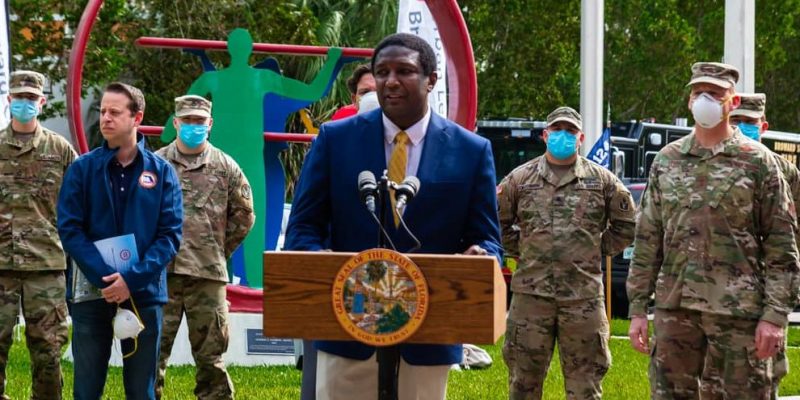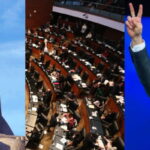We explain what government is, its functions and the characteristics of each of its forms. Also, its differences with the State.

What is government?
The government is the set of the institutions and personnel that are responsible for politically administering a State. The term comes from the Latin word I will governand this one from the Greek voice kybernânwhich translates to “pilot a ship.”
However, currently this concept has two meanings. On the one hand, a broader definition of government includes the set of authorities, institutions and political and administrative organizations that exercise the powers of the State or that execute the functions of the State. In this sense, government is the entire political system and personnel through which a community is administered, regulated or directed.
On the other hand, A narrower definition specifies that the government is the body that heads the executive branch in charge of exercising and administering political power in its operational dimension. It is generally made up of a president or prime minister and a body of ministers, secretaries and advisors. In this sense, in democratic and republican regimes in which the separation of powers governs, the term “government” refers to the head of state and the cabinet of ministers.
The government is not the same as the State. While the State is a territorial and institutional organization that has certain geographical limits, a bureaucratic administration and a legal order based on the state monopoly of violence, the government is the political body and personnel that politically directs the State. In this sense, in contemporary state societies governments are temporary but the State remains.
The first governments probably arose in ancient societies, which were divided between a group of subjects, who cultivated the land and paid tribute, and a ruling elite, who managed resources, made decisions that affected the entire community, and guaranteed compliance with their decisions through the use of force.
However, Throughout history, different forms of government were implemented and, in Greco-Roman times, some concepts were coined that are still used today. Traditionally, depending on how many people exercise power, a distinction is made between:
- Autocracy. Form of government in which power is exercised by a single individual and his clique. It can generally be an absolute monarchy or a personalist dictatorship.
- Oligarchy. Form of government in which power is exercised by a minority.
- Democracy. Form of government in which power is exercised by the majority through direct participation or through consensual representation mechanisms.
Key points
- The government is the body that politically administers a State. In regimes with separation of powers, it is exercised by the executive power.
- Its specific functions include defence, diplomatic relations, order and internal security, budget administration and management of crisis or emergency situations.
- There are different forms of government, such as republics, monarchies, dictatorships and theocracies. Government regimes can be democratic or authoritarian.
- Unlike the State, which is a permanent institutional and territorial organization, the government is a transitory political body that politically administers said State.
Functions of a government

The functions of a government are usually defined in the country's constitutional text. The Constitution establishes the form of government and governs the political exercise of the nation, as it specifies the powers, obligations and limitations of the executive branch.
In general, it is common for the functions of a government to include:
- Exercise the defense and leadership of the State both in military and territorial aspects, as well as in administrative and civil aspects.
- Conduct the internal policy of the State in matters of public order, citizen security, social services and some aspects of economic life.
- Conduct the foreign policy of the State that is, diplomatic relations through the Foreign Ministry, trade or security agreements, and defense or military strategies.
- Manage the national budget and ensure the correct functioning of the State, within the provisions of the laws and in accordance with the legislative power.
- Prepare political proposals and State management plans, as well as calling for elections, consultations and referendums.
- Appoint state authorities as established in the law and the national Constitution.
- Face irregular or emergency and exception situations that could arise, both internally and externally, such as wars, natural disasters, epidemics, pandemics, among others.
Forms of government

Currently, the main forms of government, that is, the models through which political power is exercised in most countries in the world, are republics, monarchies, theocracies and dictatorships:
Republics
Republics are forms of State administration in which govern political representation (the head of state is elected by citizens), the rule of law and the rule of law. They tend to be democratic, with free elections, rights and freedoms enshrined in a Constitution, respect for human rights and separation of powers, although authoritarian republics also exist.
Republics can be of different types, depending on the way in which the executive power is constituted and organized:
- presidential republics. In which an elected president occupies the head of the executive branch, and whose functions are independent of the legislative branch. Some examples of this form of government are: Argentina, Türkiye, Mexico, the United States, the Philippines, Indonesia and Brazil.
- Semi-presidential republics. In which the president is elected by popular vote to exercise executive power and appoints a prime minister with whom he must share the head of the government and who must answer to the legislative branch. Some examples of this form of government are: Algeria, Egypt, Haiti, Portugal, France, Russia and Taiwan.
- parliamentary republics. In which the legislative branch is the most important political force and elects a prime minister to carry out the functions of the executive branch, under the control of Parliament. In some of these republics a president is also elected, but he exercises only ceremonial or representative functions. Some examples of this form of government are: India, Germany, Trinidad and Tobago, Bulgaria, Italy, Hungary, Israel and Greece.
- One-party republics. In which the executive power is in the hands of a single political party that monopolizes control of the State, limits or prevents all forms of opposition and generally constitutes a non-democratic regime (authoritarian or totalitarian). Some examples of this form of government are: Cuba, North Korea, Vietnam, Laos, China (which admits some parties but under the control of the ruling party) and Eritrea.
Monarchies
Monarchies are forms of government in which The head of state is exercised by a monarch or king, a lifelong position that is usually hereditary.. It is one of the oldest forms of government and, in the case of Europe, was characteristic of the Middle Ages and the Modern Age. Nowadays, mainly in the West, they usually acquire democratic forms, in which the monarch fulfills protocol roles and is subject to the power of a Parliament.
Monarchies can be:
- constitutional monarchies. When the monarch or king reserves the right to appoint the government and control the executive branch, or retains some degree of political power as head of state, but is subject to constitutional laws and leaves the other public powers in charge of their respective institutions . It is a system that combines the republican separation of powers with the monarchy. Between the 17th and 20th centuries there were several constitutional monarchy regimes in Europe.
- parliamentary monarchies. When the monarch or king is formally the head of state but performs only ceremonial and representative functions (that is, as a representative of the country), while executive power is exercised by an elected prime minister, president or head of government. In these governments there is a rule of law and the monarch is never above the law. Some examples of this form of government are: Belgium, Spain, the United Kingdom, Japan, Sweden and Thailand.
- semi-parliamentary monarchies or semi-constitutional. When they function as parliamentary governments with separation of powers and an elected prime minister, but at the same time there is a monarch with significant powers who can influence the executive and legislative branches. Some examples of this form of government are: Jordan, the United Arab Emirates, Morocco, Kuwait and Monaco.
- absolute monarchies. When the government is exercised entirely by the monarch, who concentrates political power and appoints officials and a body of trusted advisors and ministers. This type of monarchy was characteristic of various periods in history, and one of its most important examples was absolutism in Europe in the 17th and 18th centuries. Currently it is only found in nations such as Eswatini (formerly called Swaziland), Saudi Arabia, Oman and Brunei.
Theocracies
Theocracies are forms of government in which political authority is vested in a religious institution or is directly supervised by it. In theocracies there is no separation between State and religion, and their legislation largely corresponds to the precepts of the dominant religion.
Theocratic regimes are a minority today, but in other times they were present in many regions. Currently, the most characteristic examples are the Islamic Republic of Iran, the Vatican City, the Islamic Emirate of Afghanistan and the Kingdom of Saudi Arabia.
Dictatorships
Dictatorships are forms of State administration in which governs a leader or group (for example, a military junta or political party) through authoritarian practices which include the violation of constitutional guarantees. Generally, they are established by force (for example, through a coup d'état) and do not recognize any type of separation of powers. In some cases, they are transitional regimes that arise in periods of crisis, but they can also perpetuate themselves for many years, presenting themselves as republican governments.
Some current examples of regimes ruled by military junta are Sudan, Burkina Faso and Mali. Various authoritarian or one-party regimes that are considered dictatorships by various analysts are: Eritrea, Cuba, Belarus, Syria, Venezuela and North Korea.
Difference between government and state

Government and State do not mean the same thing. The State is a form of social and institutional organization that governs within certain territorial limits and in which order, coexistence and internal security prevail. (which some political theories define as a social pact). This type of organization is based on the transfer of the monopoly of violence to the political body that administers the State. In this sense, the State can be understood both as the bureaucratic and government structure that has a monopoly on violence and as the entire community that is governed by this type of social pact protected by law.
Instead, The government is a body made up of temporary personnel, in charge of administering the powers of the State that citizens generally confer upon him through suffrage, and that he exercises in the name of the common well-being (regardless of whether in practice this really turns out to be the case or not). In this sense, the government is ephemeral but the State is permanent. Furthermore, the government is exercised by a sector of society while the State encompasses all citizens.
The confusion between the government and the State often leads to scenarios of loss of the rule of law, political freedoms and the separation of powers. Thus, in totalitarian regimes (such as Nazism in Germany or Stalinism in the Soviet Union) the State, the government and the party usually mix or overlap, which begin to function as a single entity, and it is then that the political objectives and ideological principles of the ruling party are imposed by force on the entire society.
Follow on:
References
- Bobbio, N., Matteucci, N. and Pasquino, G. (Dirs.). (2015). Politics Dictionary. 21st century.
- Brogan, H. (2024). Government. Encyclopedia Britannica. https://www.britannica.com/
- Heslop, D. A. (2023). Political system. Encyclopedia Britannica. https://www.britannica.com/
- Sartori, G. (1994). Comparative constitutional engineering. Economic Culture Fund.
- Schlager, N., & Weisblatt, J. (Eds.). (2006). World Encyclopedia of Political Systems and Parties. Facts on File.





